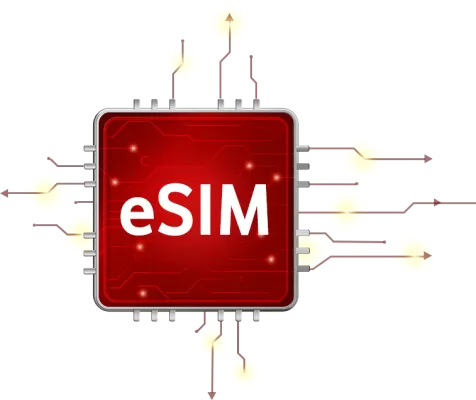
How Does eSIM Work?
Technology has a way of sneaking into our lives and quietly transforming the way we do things. Take eSIMs, for example. A few years ago, most of us wouldn’t have even heard of them, let alone understood how they worked. Fast forward to today, and eSIMs are steadily becoming the norm, revolutionizing the way we connect our devices to cellular networks. But how does eSIM work, and why should you care?
Let’s break it down in a way that’s easy to understand, conversational, and dare I say, fun.
What Is an eSIM, Anyway?
First things first, let’s tackle the basics. An eSIM stands for “embedded SIM.” Unlike the traditional SIM cards (those tiny plastic chips we’ve all fumbled with at some point), an eSIM isn’t something you can remove or swap out. It’s built directly into your device—be it a smartphone, smartwatch, tablet, or even some laptops.
Think of the eSIM as a digital SIM card. It performs all the same functions as a physical SIM, like connecting your device to your mobile carrier’s network, but it’s embedded in your device’s hardware. No more poking around with SIM ejector tools or worrying about losing that tiny card while switching phones. It’s all handled electronically.
How Does eSIM Actually Work?
Now that we know what an eSIM is, let’s get into how it works. In essence, an eSIM operates through software rather than hardware. Here’s a simplified step-by-step breakdown:
- Profile Storage
Your mobile carrier creates something called an “eSIM profile.” This profile contains all the information needed to connect your device to their network, such as your unique subscriber identity. - Over-the-Air Activation
Instead of physically inserting a SIM card, you download this eSIM profile onto your device over the internet. This is often done by scanning a QR code provided by your carrier or through a dedicated app. - Device Configuration
Once downloaded, your device configures itself using the profile. Voilà! You’re connected to the network without ever touching a physical SIM card. - Switching and Managing Profiles
One of the coolest aspects of eSIM is that your device can store multiple eSIM profiles at once. For example, you could have a profile for your personal number and another for your work line. Switching between them is as simple as tapping a few settings—no swapping cards required.
What Are the Benefits of eSIM?
The shift to eSIM isn’t just about ditching physical SIM cards; it’s about unlocking a host of practical benefits. Let’s talk about why eSIMs are making waves.
- Convenience at Its Best
With an eSIM, setting up or switching carriers is ridiculously easy. Traveling abroad? You can buy a local eSIM plan online and activate it instantly—no need to hunt down a store or fiddle with a tiny card. - Better for the Environment
Less plastic, fewer physical components, and reduced manufacturing waste. Every little bit helps when it comes to making tech more eco-friendly. - Space-Saving Design
Because eSIMs are embedded directly into devices, they save precious internal space. For manufacturers, this means more room for other features like bigger batteries or additional sensors. - Dual SIM Without the Hassle
Many modern smartphones with eSIM support allow you to run two numbers simultaneously—one on the eSIM and one on a physical SIM. It’s a game-changer for anyone who juggles personal and work numbers. - Secure and Reliable
Losing a physical SIM card can be a headache, but with eSIM, everything is tied to your device. Plus, carriers can securely lock or wipe eSIM profiles remotely if needed.
Where Do We See eSIM in Action?
You might be using eSIM technology without even realizing it! Here are a few examples:
- Smartphones: Devices like the iPhone 14 and Google Pixel series come with eSIM functionality built-in. In fact, some newer iPhone models sold in the U.S. are eSIM-only—no SIM slot at all.
- Wearables: Smartwatches, like the Apple Watch, often use eSIM to stay connected without needing to pair with a phone.
- IoT Devices: eSIM is a favorite in the world of IoT (Internet of Things), allowing connected gadgets like smart thermostats and GPS trackers to link up seamlessly.
- Laptops: Certain laptops and tablets, like Microsoft Surface Pro and some iPad models, offer eSIM to provide cellular connectivity on the go.
Are There Any Downsides to eSIM?
Of course, no technology is perfect, and eSIM is no exception. Here are a couple of potential drawbacks to consider:
- Carrier Compatibility
Not all carriers support eSIM yet, especially in certain regions. If your provider isn’t on board, you’ll have to stick with a physical SIM. - Device Limitations
Older devices or budget models may not include eSIM functionality, so it might take a while before the technology is fully universal. - Less Flexibility for Some Users
While eSIM makes switching carriers easier, some people prefer the physicality of traditional SIM cards, especially in emergencies when you can simply pop a SIM into another phone.
The Future of eSIM
eSIM technology is still in its early stages, but its potential is enormous. Industry experts predict that as more carriers adopt the technology and more devices are built with eSIM support, it will become the standard way we connect to networks.
Imagine a world where setting up a new phone takes minutes, not hours. Or where you can instantly hop between carriers to find the best deal. Or even one where your connected car, smartwatch, and phone are all managed effortlessly through a single interface. That’s the kind of seamless, integrated future eSIM is paving the way for.
 How to Get Started with eSIM
How to Get Started with eSIM
If you’re ready to dive into the eSIM world, here’s how to get started:
- Check Your Device
Make sure your phone or gadget supports eSIM. Most recent flagship devices do, but double-check your model to be sure. - Contact Your Carrier
Reach out to your mobile provider and ask if they support eSIM. If they do, they’ll provide you with a QR code or instructions to activate it. - Activate Your eSIM
Follow the steps provided by your carrier. It usually involves scanning a QR code or downloading an app, and you’re good to go! - Explore Multi-Line Options
Experiment with storing multiple profiles on your eSIM device. It’s perfect for frequent travelers or anyone juggling work and personal numbers.
Final Thoughts
eSIM is more than just a new piece of tech; it’s a step toward a more connected, flexible, and eco-conscious world. While it might take some time to become the universal standard, the benefits of eSIM are hard to ignore. It’s easy to set up, offers incredible convenience, and is already transforming the way we think about connectivity.
So, the next time you hear about eSIM, you won’t just know what it is—you’ll know exactly how it works and why it’s worth getting excited about. Welcome to the future of connectivity!
- AIRALO
-
eSIM for
Europe
39 countries
-
1 GB – 7 days – €4.27
3 GB – 30 days – €11.09
10 GB – 30 days – €31.57
- AIRHUB
-
eSIM for
Europe
34 countries
-
1 GB – 7 days – €2.99
3 GB – 30 days – €5.12
10 GB – 30 days – €11-09
- aloSIM
-
eSIM for
Europe
32 countries
-
1 GB – 7 days – €5.00
3 GB – 30 days – €13.00
10 GB – 30 days- €36.00
- GigSky
-
eSIM for
Europe
36 countries
-
1 GB – 7 days – €6.99
3 GB – 15 days – €11.19
10 GB – 30 days – €27.99
- iRoamly
-
eSIM for
Europe
39 countries
-
1 GB – 7 day – €6.83
3 GB – 15 days – €10.24
10 GB – 30 days – €18.77
- Maya Mobile
-
eSIM for
Europe
34 countries
-
1 GB – 7 days – –
5 GB – 15 days – €5.99
10 GB – 30 days- €13.99
- NOMAD
-
eSIM for
Europe
36 countries
-
1 GB – 7 days – €4.71
3 GB – 15 days – €10.27
10 GB – 30 days – €15.41
- UBIGI
-
eSIM for
Europe
29 countries
-
500 MB – 1 day – €2.00
3 GB – 30 days – €8.00
10 GB – 30 days – €19.00
- VOIA
-
eSIM for
Europe
34 countries
-
1 GB – 7 days – €2.69
3 GB – 15 days – €5.05
10 GB – 30 days- €11.70






 How to Get Started with eSIM
How to Get Started with eSIM












